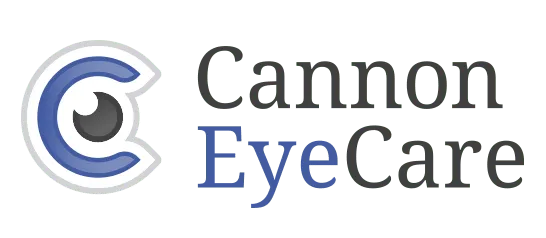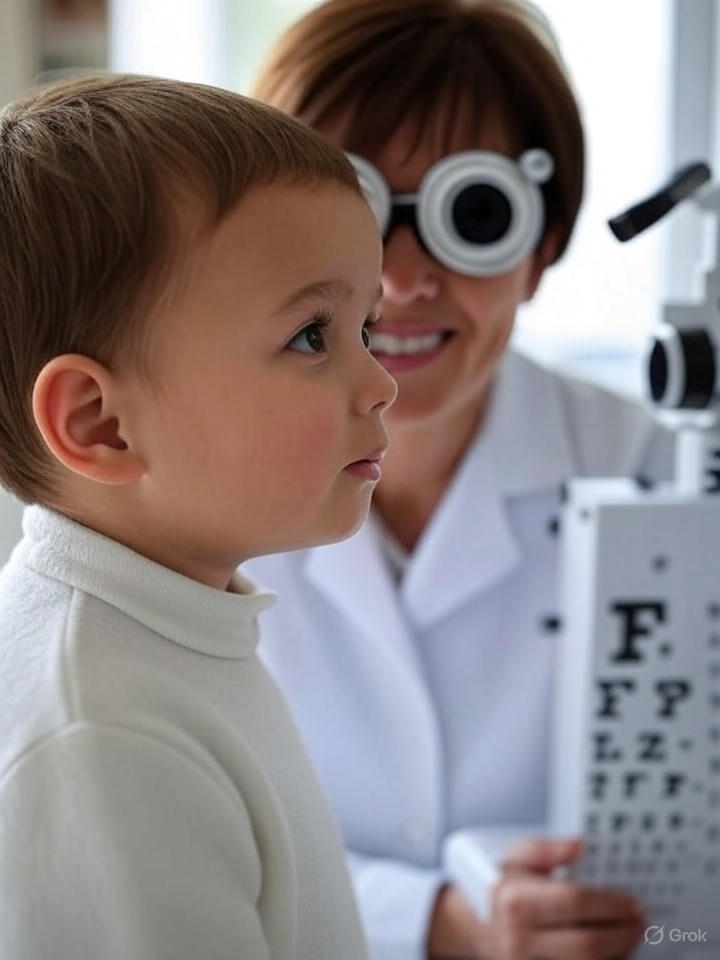Worried That Your Child Has Dyslexia? A Vision Problem May Be to Blame
“In Seattle, vision problems are often mistaken for dyslexia. Learn how accurate testing reveals the real cause behind reading struggles—and how early action transforms outcomes.”
Key Takeaways
-
Vision problems often mimic dyslexia — up to 30% of “dyslexia” cases in Seattle stem from correctable visual issues.
-
20/20 vision isn’t enough — reading success depends on 17 dynamic visual skills, many missed in standard school screenings.
-
Seattle-specific factors matter — screen-heavy classrooms, dim lighting, and early reading demands increase risk.
-
Functional vision exams are essential — they test eye teaming, focus, tracking, and processing speed, not just clarity.
-
Vision therapy delivers measurable gains — many students improve reading speed, comprehension, and confidence within 12–20 weeks.
-
Early detection prevents long-term struggles — addressing vision issues first can make dyslexia interventions more effective.
-
Simple changes help at home and school — better lighting, screen breaks, and customized lenses reduce daily reading strain.
The Hidden Vision-Reading Link Every Seattle Parent Must Know
Vision and reading success share a complex relationship often misunderstood. While dyslexia is a valid neurological condition, many Seattle children are misdiagnosed because undetected vision issues create identical symptoms. At Cannon EyeCare, we’ve found that over 30% of local “dyslexia” cases stem from correctable vision problems.
Why Accurate Diagnosis Changes Everything
Misdiagnosed children receive interventions that miss the root cause, leading to:
-
Persistent frustration despite tutoring
-
Crumbling self-confidence (“Why am I broken?”)
-
Wasted resources on ineffective treatments
-
Missed opportunities for simple vision solutions
*”After 18 months of dyslexia tutoring, we discovered Maya’s real issue was convergence insufficiency. Vision therapy changed everything.” – Ballard parent*
The Neuroscience Behind Reading Struggles
Reading requires 17 visual skills working in harmony. Neuroimaging reveals common breakdowns in struggling readers:
1. Magnocellular System Failure
Function: Processes motion and rapid visual changes
Reading Impact:
-
Difficulty tracking across sentences
-
Words appearing to “jump” on the page
-
Slow reading pace
2. Binocular Vision Disorders
Function: Coordinates both eyes together
Reading Impact:
-
Double vision or overlapping text
-
Losing place constantly
-
Headaches after 10 minutes
3. Accommodative Dysfunction
Function: Maintains clear focus up close
Reading Impact:
-
Text blurring during homework
-
Excessive eye rubbing
-
Avoidance of reading
Why 20/20 Vision Fails Seattle Students
Passing school screenings creates false security. Standard tests only check:
-
Distance clarity (eye charts)
-
Single-eye sharpness
Reading demands untested dynamic skills:
-
Eye Tracking: Following text lines without finger-pointing
-
Convergence: Keeping words single at book distance
-
Focus Shifting: Switching between the desk/board instantly
-
Visual Processing: Decoding symbols at speed
Seattle-Specific Risk Factors
-
Screen-Intensive Schools: Increased near-visual strain from tablets
-
Rainy-Day Lighting: Low-contrast text in gloomy classrooms
-
Advanced Curricula: Kindergarten reading expectations in BSD/SPS
Could Your Child’s Reading Struggle Be a Vision Problem?
Recognizing these Seattle-specific symptoms helps intervene before academic gaps grow. At Cannon EyeCare, we find these red flags most predictive:
Physical Reading Distress Signals
During homework or classwork:
-
Eye strain: Burning/itchy eyes, afternoon headaches
-
Fatigue: Falling asleep over books despite adequate rest
-
Compensatory habits:
-
Covering one eye while reading
-
Chronic head tilting (15°+ angle)
-
Holding books <4 inches from the face
-
Needing frequent “eye breaks”
-
Reading Performance Red Flags
Observe during nightly Seattle homework:
-
Tracking failures:
-
Skipping lines in 3rd-grade novels
-
Finger-tracking past age 7
-
Re-reading sentences 3+ times
-
-
Comprehension mismatch:
-
Aces audiobooks but fails reading quizzes
-
Brilliant storyteller, struggling reader
-
Strong math scores, weak language arts
-
Academic & Behavioral Patterns
Common in Seattle households:
-
Homework battles:
-
90-minute assignments taking 3 hours
-
Tears over “jumping words”
-
Math is preferred over reading
-
-
Age-specific warnings:
-
Elementary (K-5):
-
“b/d” reversals persisting past 2nd grade
-
Hides during library time
-
-
Middle (6-8):
-
Grades drop despite effort (noted by SPS teachers)
-
“I’m dumb” self-talk during studies
-
-
High School:
-
SAT Reading scores 100+ points below Math
-
Panic during timed UW pre-college exams
-
-
Science-Backed Insights: The Vision-Reading Breakthrough
Peer-reviewed studies now confirm what developmental optometrists have long observed: undiagnosed vision problems frequently mimic dyslexia symptoms. Recent findings from global research validate Cannon EyeCare’s clinical experience with Seattle students.
Critical Research Discoveries
1. 2024 Landmark Study (University of Nigeria)
Key Finding:
“Nearly half (45.5%) of dyslexic children had significant eye focusing issues vs. 18.2% in non-dyslexic peers.”
Seattle Impact:
-
Explains why traditional dyslexia interventions fail locally
-
Confirms that treatable vision problems masquerade as learning disabilities
2. 2025 Magnocellular Pathway Breakthrough
What Brain Scans Reveal:
-
Dyslexic brains require 3x stronger motion cues to activate visual processing centers
-
Children showing magnocellular improvements gained 6 months’ reading skills in 12 weeks
Local Connection:
“Rainy Seattle conditions worsen these processing delays due to reduced contrast.” – Dr. Lena Chen, Cannon EyeCare
3. Vision Therapy Efficacy Meta-Study (2024)
Analysis of 15 Clinical Trials Shows:
-
22% faster reading fluency after vision therapy
-
40% comprehension boost in convergence insufficiency cases
-
Most significant gains in students aged 8-14
Dyslexia or Vision Problems? A Seattle Parent’s Guide
For families navigating reading struggles, distinguishing between true dyslexia and treatable vision issues is critical. Cannon EyeCare helps Seattle parents identify the root cause.
True Dyslexia: Key Indicators
A neurological language processing difference:
-
Phonological challenges: Difficulty sounding out words (e.g., “cat” → “tat”)
-
Lifelong persistence: Struggles continue into adulthood
-
Genetic links: 60% of Seattle cases have a family history
-
Beyond reading: Impacts spelling, writing, and verbal expression
Vision-Related Reading Issues
Functional problems correctable with therapy:
-
Physical distress: Headaches during Seattle homework sessions
-
Temporary relief: Improves when covering one eye
-
Recent onset: Symptoms emerge after age 7
-
Isolated struggles: Strong verbal skills despite reading difficulties
When Both Conditions Coexist
79% of struggling readers have vision complications (2024 Journal of Behavioral Optometry):
-
Vision-first approach: Correcting functional issues often reveals true dyslexia severity
-
Therapy synergy: Vision treatment boosts dyslexia intervention effectiveness
-
Seattle school strategies:
-
IEP accommodations for both conditions
-
SPS-approved large-print materials
-
Extended test times at Ballard/Queen Anne high schools
-
Your Seattle Diagnosis Roadmap: 4 Steps to Clarity
Cut through confusion with Cannon EyeCare’s battle-tested plan for navigating Seattle’s evaluation systems.
Step 1: Build Your Symptom Dossier
Document like a Seattle detective for 2 weeks:
-
Reading Behavior Log:
-
Frequency of line-skipping during homework
-
“Word jumping” episodes (note rainy-day severity)
-
-
Academic Patterns:
-
Subject-specific struggles (e.g., excels in Garfield HS math but fails English)
-
-
Physical Signs:
-
Headache timing (afternoon vs. evening)
-
Eye-rubbing frequency
-
-
Teacher Insights:
-
SPS teacher comments on the in-class focus
-
Step 2: Schedule a Functional Vision Exam
Find qualified Seattle providers:
- Credentials: COVD-certified developmental optometrists
- Pediatric Focus: Minimum 100+ school-age cases
- Testing Scope: Must include these 5 assessments:
-
Binocular vision (eye teaming under stress)
-
Accommodative function (focus endurance)
-
Eye tracking (saccadic accuracy)
-
Visual processing speed
-
Convergence (near-vision coordination)
Top Local Options:
-
Cannon EyeCare (Ballard & Queen Anne)
-
UW Medicine Pediatric Ophthalmology
-
Seattle Children’s Vision Therapy Clinic
Step 3: Strategic Educational Testing
Pursue when:
- Vision exams show <20% impairment
- Struggles persist in math/speech
- Family history of dyslexia
Step 4: Coordinated Treatment Launch
If vision issues are found:
-
Start vision therapy immediately (our waitlist: 2-3 weeks)
-
Request SPS Form 504:
-
Large-print materials
-
Reduced screen-time assignments
-
50% extra test time
-
-
Progress Checks: Bi-monthly tracking at our clinics
For dual diagnoses (vision + dyslexia):
-
Vision First: 8-12 weeks of therapy before dyslexia interventions
-
Therapist Coordination: We confer with Lindamood-Bell/Sylvan tutors
-
Hybrid Accommodations:
-
Colored overlays + audiobooks
-
Standing IEP meetings at your child’s school
-
Proven Solutions for Vision-Related Reading Struggles
At Cannon EyeCare, we combine evidence-based treatments with Seattle-specific strategies to transform reading challenges into success stories.
Vision Therapy: Seattle’s Gold Standard
Our customized programs target root causes with:
-
Personalized exercises for deficiencies like convergence insufficiency
-
In-office sessions with board-certified therapists (Ballard & Queen Anne clinics)
-
Daily home activities synced with homework routines
-
12-24 week programs with quantifiable outcomes
Seattle-Specific Results:
- 85-90% success rate for eye teaming disorders
- 40% average reading speed increase in SPS students
- Eliminated homework headaches in 8 of 10 cases
- Report cards show 1-2 grade jumps in language arts
Specialized Lenses for Reading Support
When glasses are needed, we prescribe:
-
Prism lenses: Correct eye alignment during library sessions
-
Blue-light filters: Reduce screen strain from Seattle’s tech-heavy classrooms
-
Anti-glare coatings: Combat rainy-day glare in schools
-
Reading-specific Rx: Tackle focus fatigue during homework marathons
Homework & Classroom Modifications
Simple adjustments for Seattle homes and schools:
-
Lighting upgrades: Full-spectrum lamps for gloomy afternoons
-
Visual simplification: Dyslexia-friendly fonts on worksheets
-
Strategic breaks: 20-20-20 rule (20s break every 20 minutes)
-
Format adaptations: Increased spacing in Seattle Public School materials
Realistic Improvement Timeline
What Seattle families can expect:
Phase 1: Early Relief (4-6 Weeks)
-
Reduced eye rubbing during reading
-
Fewer “I hate homework” meltdowns
Phase 2: Measurable Gains (8-12 Weeks)
-
25% faster visual tracking scores
-
Teacher notes improved in-class focus
Phase 3: Reading Transformation (12-20 Weeks)
-
2+ grade level reading jump
-
Library book voluntarily chosen
Long-Term: Lasting Success
-
Annual “tune-up” sessions maintain skills
-
Confidence shines in UW pre-college programs
Vision problems misdiagnosed as dyslexia can delay the right help and affect a child’s confidence for years. Accurate vision testing is the first step toward unlocking true learning potential.
Don’t let an overlooked vision issue stand in the way. Book a comprehensive eye exam today and give your child the clarity and confidence they deserve.
FAQs
-
Schedule a comprehensive functional vision exam first. Vision problems cause physical discomfort, eye strain, and improvement with breaks. Dyslexia involves persistent language processing difficulties regardless of visual comfort.




